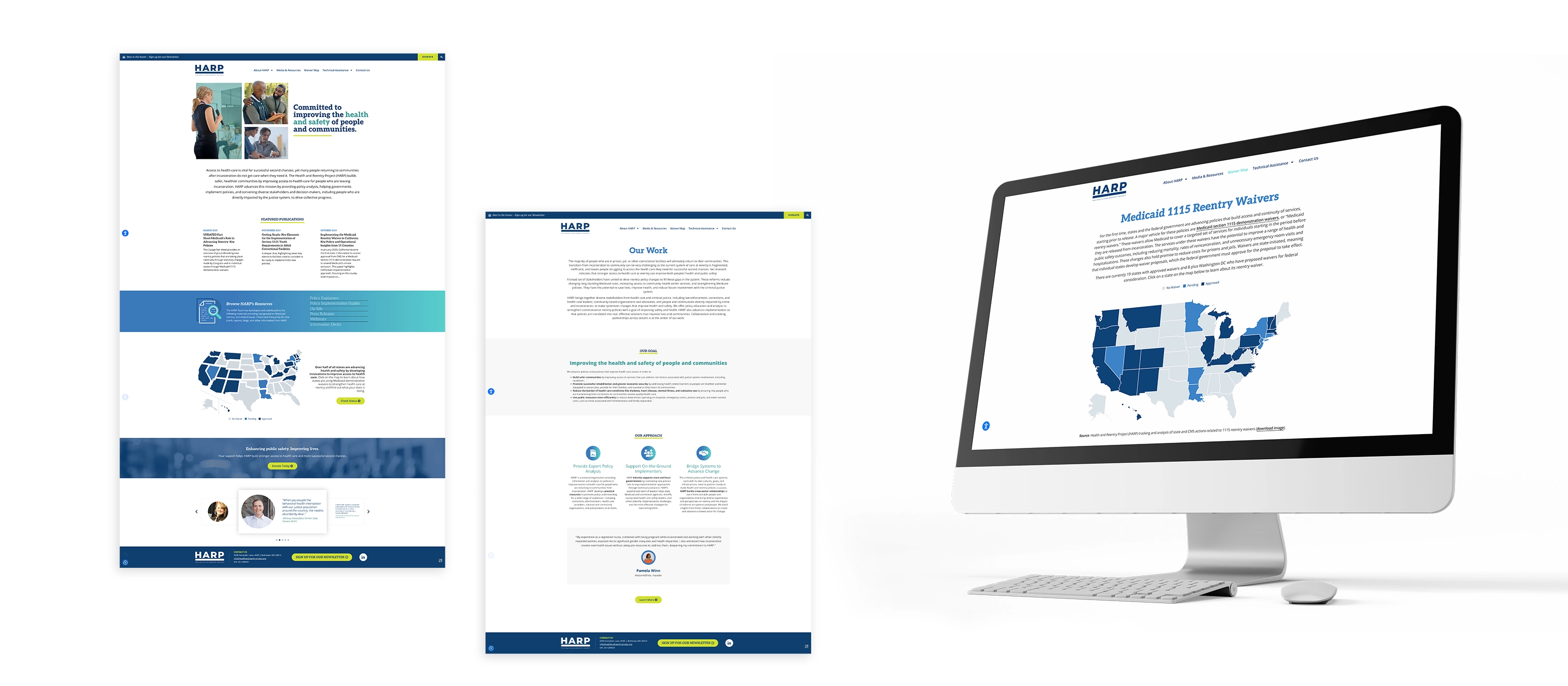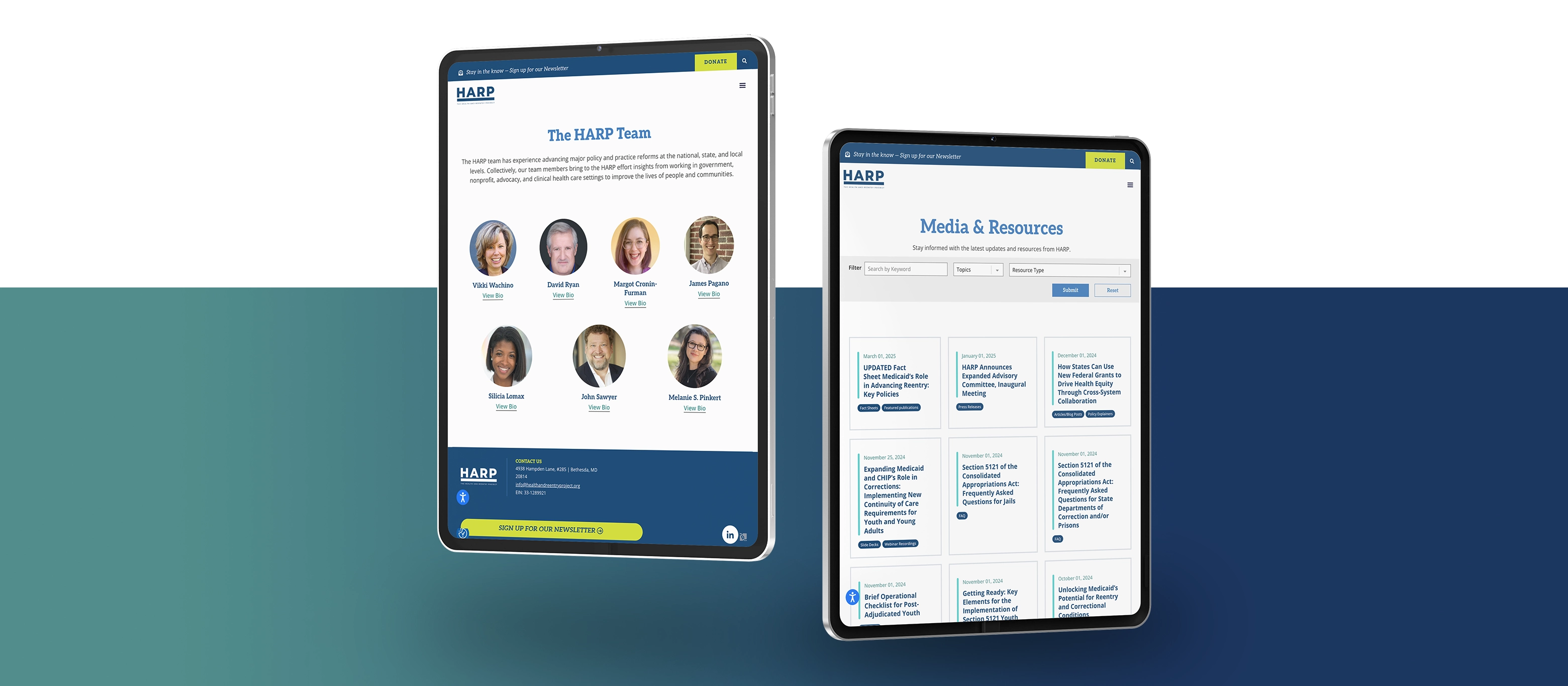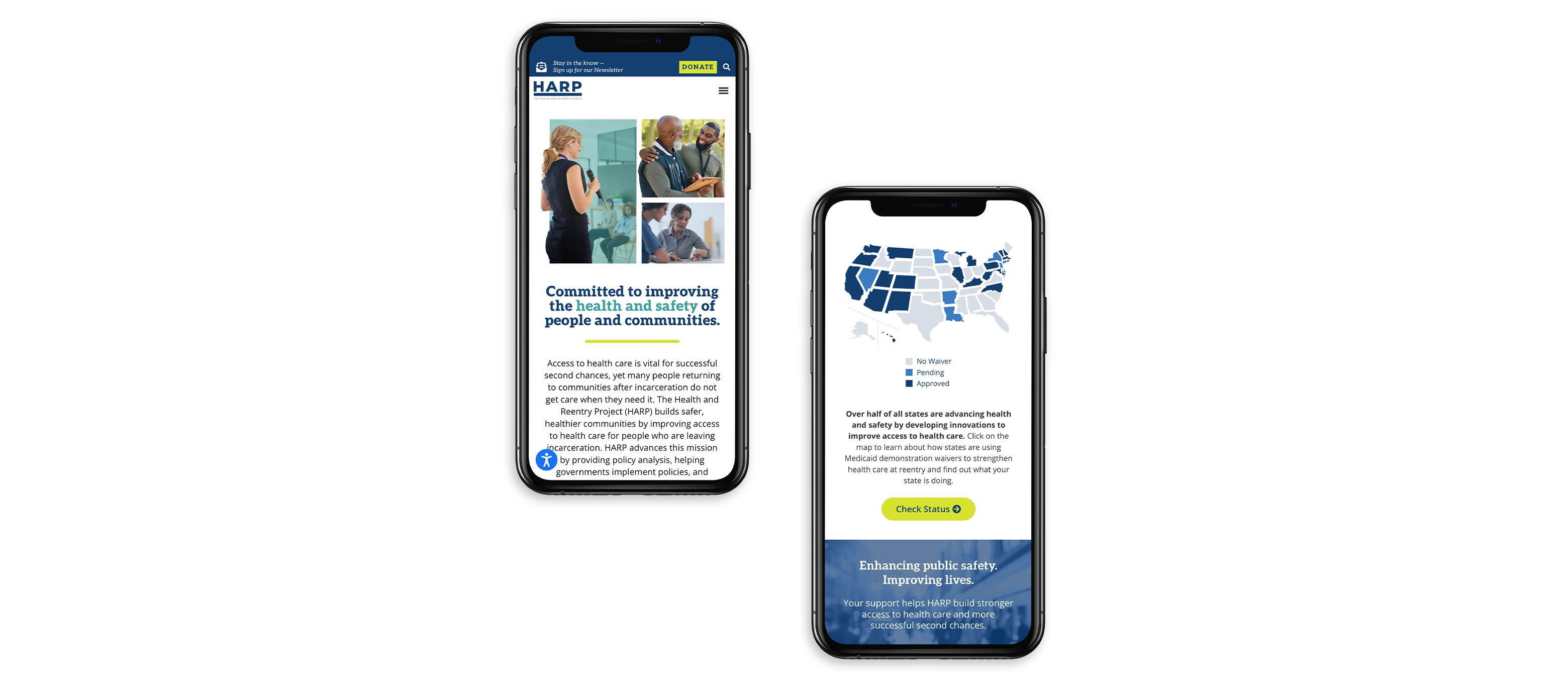The Health and Reentry Project works to ensure that individuals preparing for release from correctional facilities receive healthcare in the critical weeks after reentry. Data shows that earlier access to quality healthcare significantly improves the chances of successful reintegration into society. And since we know that a quality website is the best way to ensure the proper dissemination of information, we were thrilled to partner with HARP to help them achieve their goals.
Project Overview
This project consisted of a full website redesign, prompted by long-standing dissatisfaction with the existing site. A light strategic component was necessary, as the organization struggled to clearly express what they do. We reviewed current materials, including brochures, branded assets and the existing site, conducted an audit and offered improvement recommendations. Our work included an SEO audit and a messaging and content theme analysis. These insights informed that the new homepage content better reflected the organization’s mission and services.
Media Strategy
Our team conducted a full content and usability audit of both the website and HARP’s printed materials. Our findings showed that much of the existing content was written at a reading level that was too high for general comprehension. We revised and simplified key sections to make sure site visitors could understand the profound mission of HARP.
A navigability and accessibility audit by our strategists highlighted opportunities for improvement. Recommendations included adding people-first imagery to connect emotionally with visitors and emphasize real-world outcomes from policy changes. Visual elements were designed to move users toward action.
We also emphasized the importance of visualized data and personalized storytelling. Lastly, we recommended a consistent tone across the site, whether in first or third person, to clarify the narrator’s perspective.



